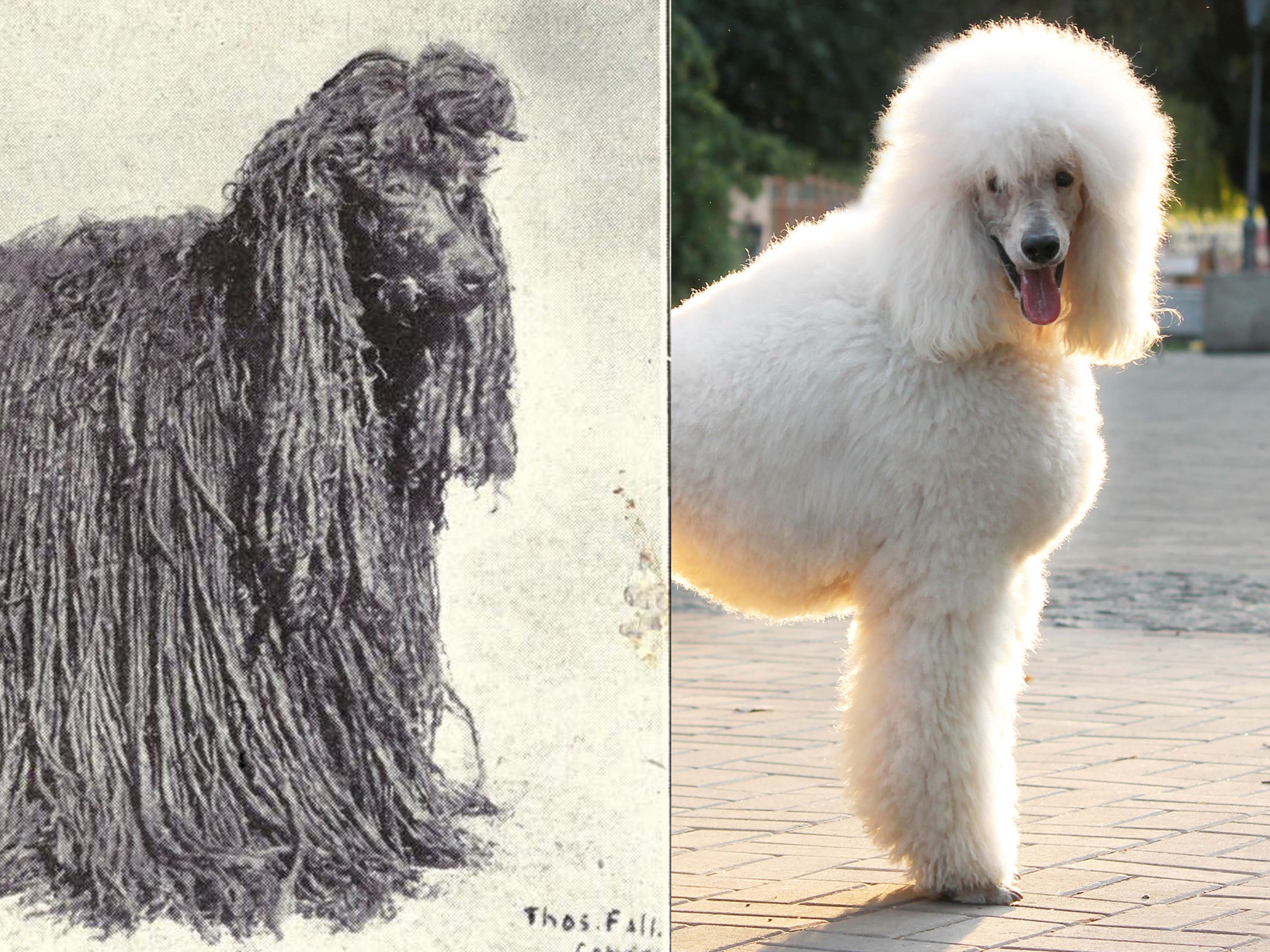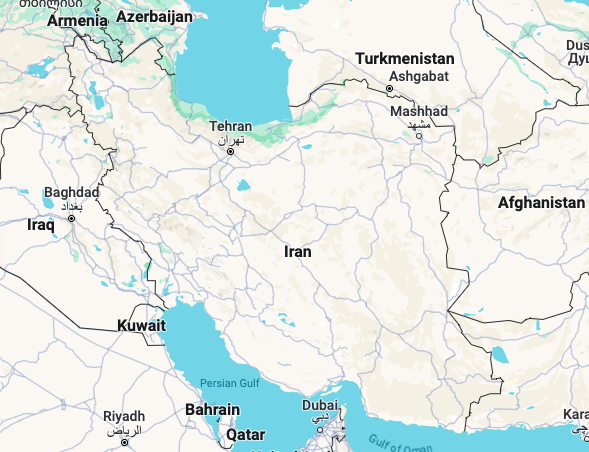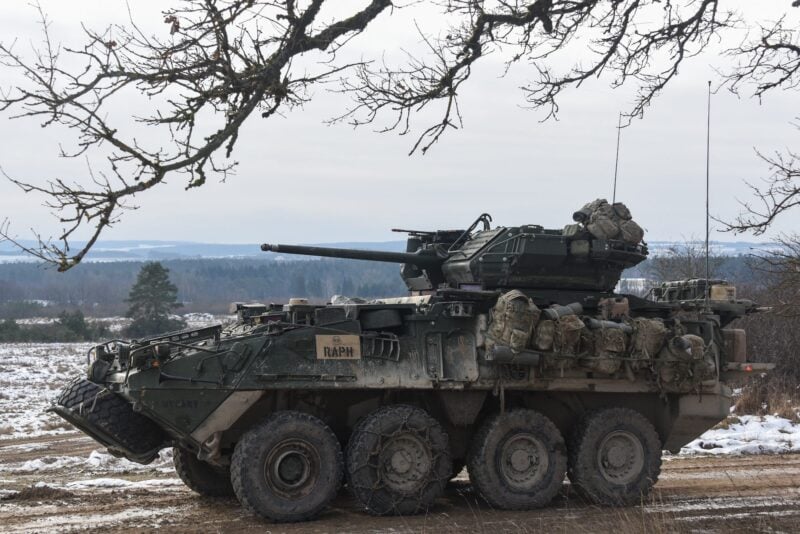- Dogs have been our furry companions for thousands of years, but they didn’t always look the way they do today.
- Many well-known dog breeds have changed a lot physically in the last century, thanks to humans.
- By identifying specific traits – such as size, coat color, and demeanor – and allowing only those animals to mate, humans have created at least 167 different “breeds,” or groups of dogs with unique physical and mental characteristics. Still, they’re all part of the same species.
- The Science of Dogs blog put together a side-by-side comparison of several popular breeds from the 1915 book “Dogs of All Nations” by Walter Esplin Mason, showing what they look like today.
- Here are some of the dogs from that list, plus a few more we found ourselves.
Tanya Lewis contributed to an earlier version of this post.
The bull terrier in 1915 appears to have been a fit dog with a well-proportioned head and slim torso. “Dogs of All Nations” called it the “gladiator of the canine race.”

Source: “Dogs of All Nations”
Today’s bull terriers are bred to have a football-shaped head and a thick, squat body — a shift from the lean and handsome dog of 1915.
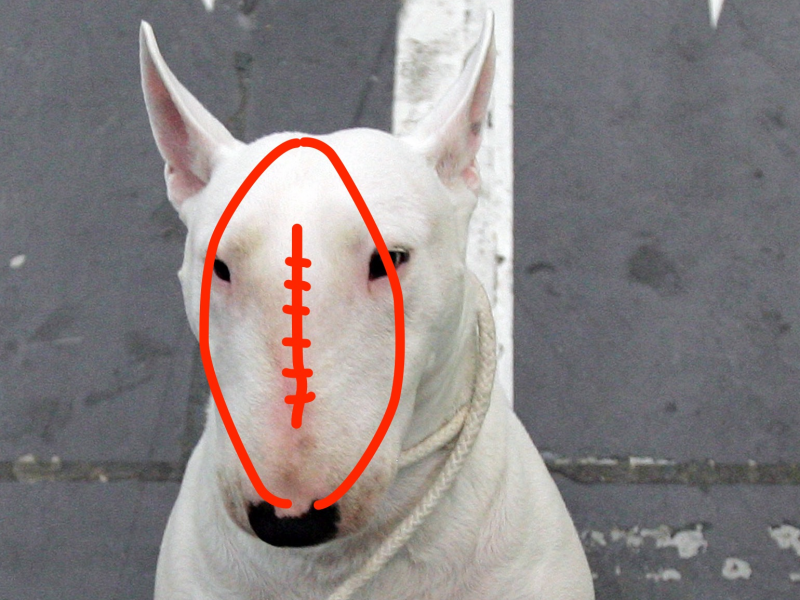
Source: “Dogs of All Nations”
Few dogs have been as artificially shaped by breeding as the English bulldog. In the UK, the dogs were used for bull-baiting — a blood sport where dogs were used to bait and attack bulls — until it became illegal in 1835.

Source: “Dogs of All Nations”
In 1915, the bulldog already had some of the characteristic features we see today, like saggy jowls and a squat stance. But modern day bulldogs have more pronounced facial wrinkles, and an even thicker and squatter body.

Source: "Dogs of All Nations"
In 1915, "Dogs of All Nations" described the German shepherd as a "medium sized dog" weighing just 55 pounds, with a "deep chest, straight back and strong loins."

Source: "Dogs of All Nations"
But today's German shepherds are bred to be considerably larger — 75 to 95 pounds — with a more sloping back.

Source: American Kennel Club
The American Kennel Club (AKC) describes the ideal specimen as "a strong, agile, well muscled animal, alert and full of life." These qualities may explain why the German shepherd's place in the police force dates back a full century.
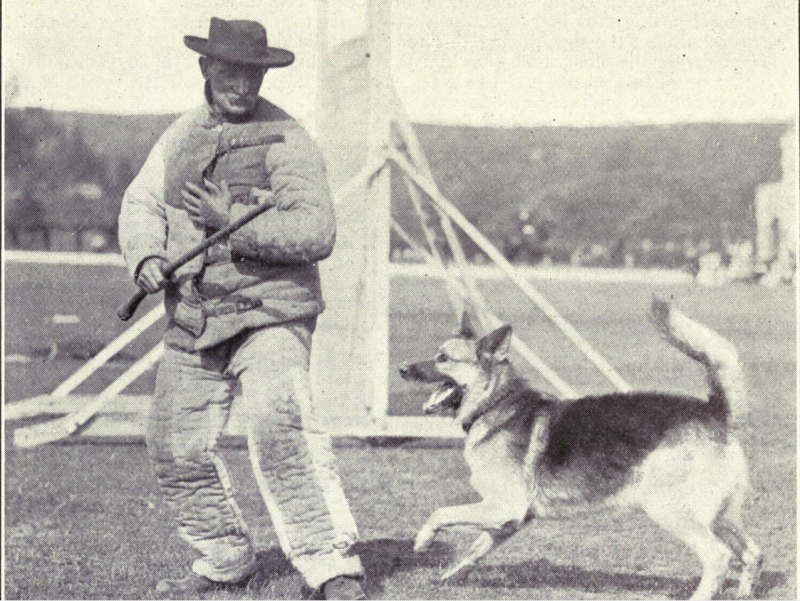
Source: American Kennel Club
The German shepherd isn't the only dog whose role has stayed consistent for over 100 years. According to the AKC, pugs are among the oldest breeds of dogs, and they have served humans by keeping them company since the beginning of their time.
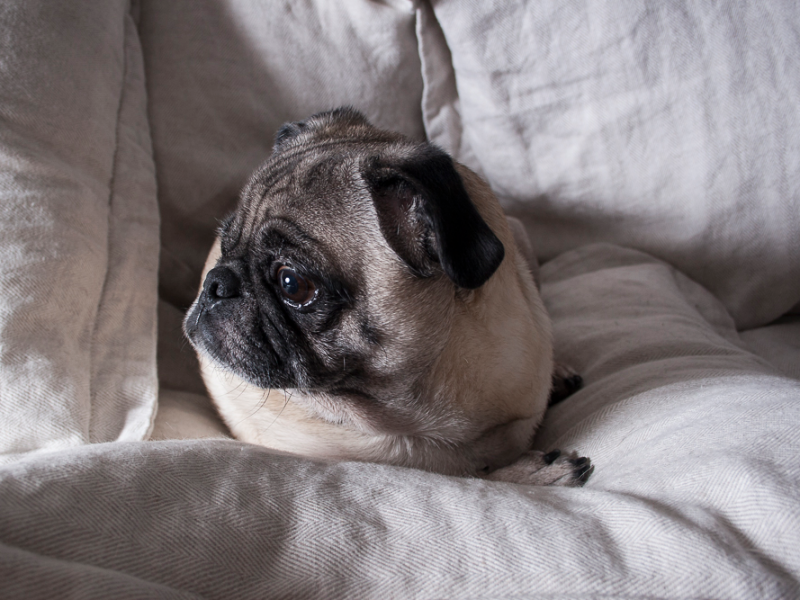
Source: American Kennel Club
Although pugs have stayed roughly the same size over time, they have been selectively bred to have bigger, wider eyes and flatter noses, according to the Guardian.
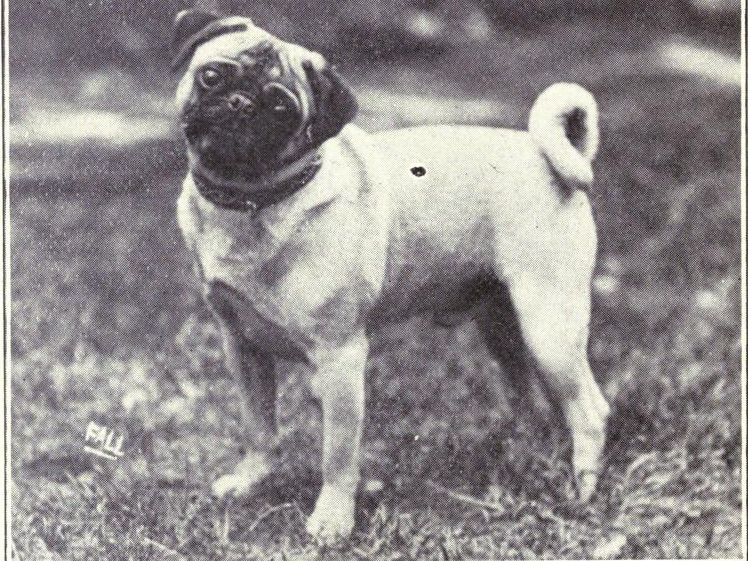
Source: The Guardian
Unfortunately, flatter faces, in which the nose is closer to the rest of the face, have been linked to breathing problems and other health risks.

Source: The Guardian
Boston terriers also have significantly flatter faces than they did 100 years ago ...

Source:"Dogs of All Nations"
... but, like pugs, these terriers have stayed roughly the same size in a century.
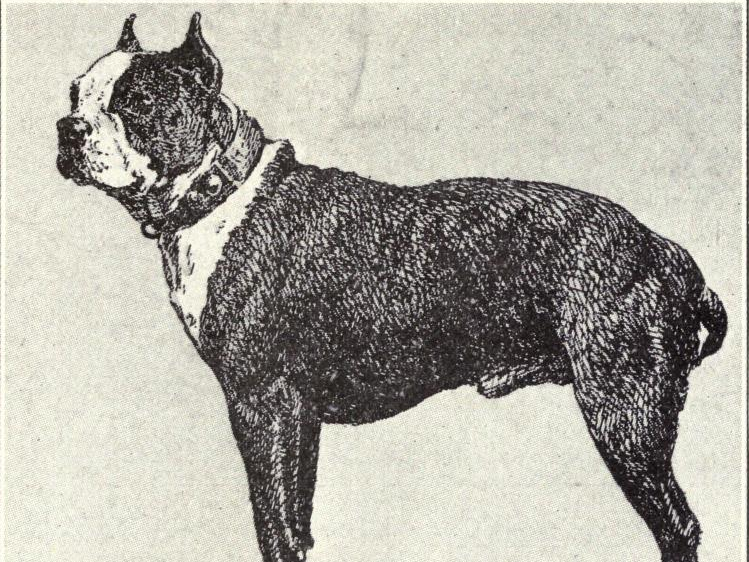
Source:"Dogs of All Nations"
Aside from their flattening faces, French bulldogs are made to be shorter and stalkier than they used to be. The AKC describes them as "a muscular dog of heavy bone.
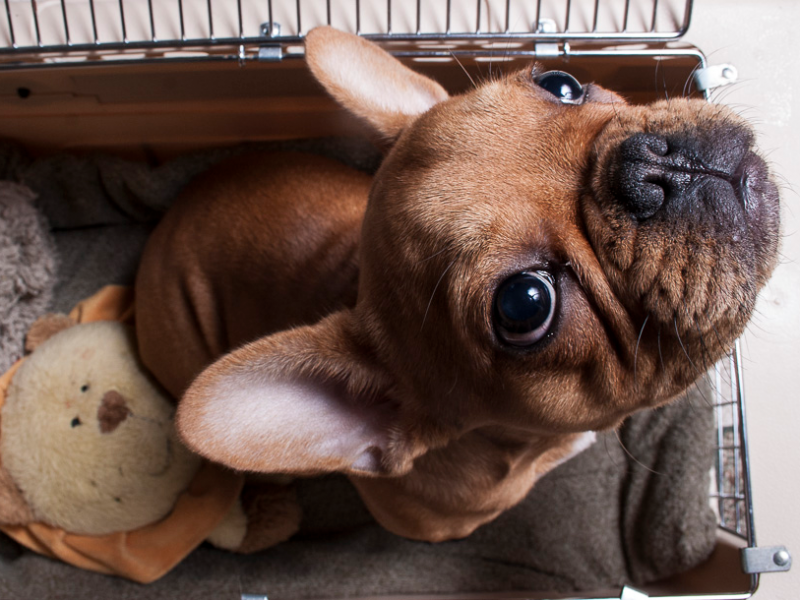
Source: American Kennel Club
But the modern French bulldog still has some of the same features as it did 100 years ago ...

Source: "Dogs of All Nations"
... like having a big head.
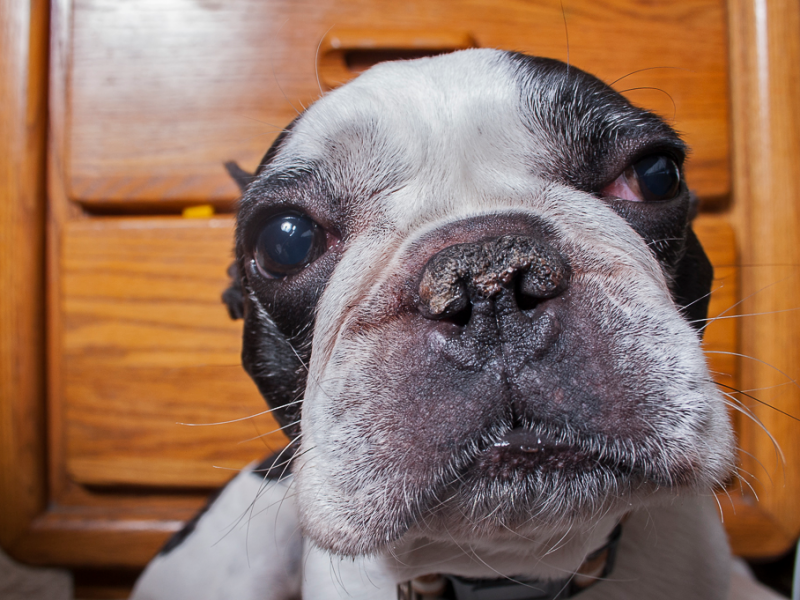
Source: "Dogs of All Nations"
Though you can't tell from this photo, "Dogs of All Nations" described the coloring of the Airedale's head and ears as a rich tan, as well as the legs up to the thighs and elbows. And the dog's coat was "hard and wiry," but not long enough to be "ragged"...

Source: "Dogs of All Nations"
...until now. Today, the color appears not to have changed much, but the fur of modern Airedales appears to be longer and more "ragged" than it was in 1915.
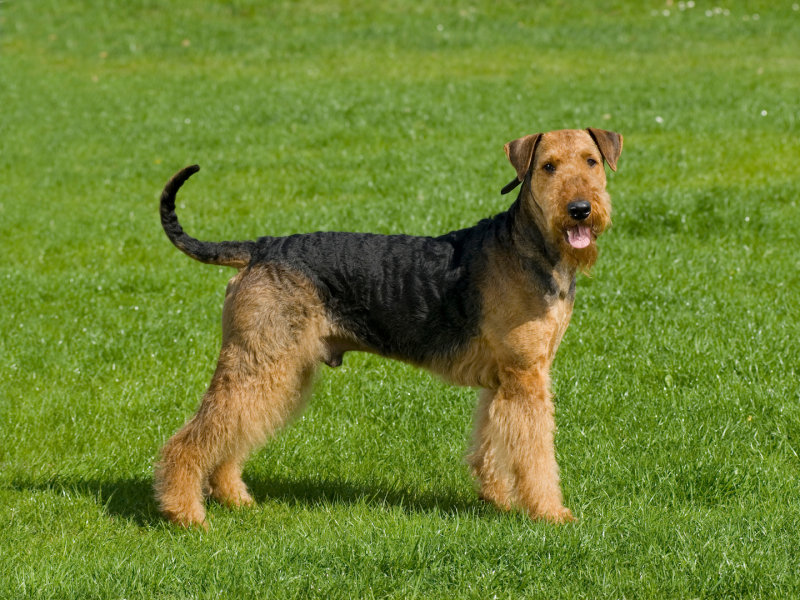
Source: "Dogs of All Nations"
The Shetland sheep dog has doubled in size since "Dogs of All Nations" reported that it weighed just 7 to 10 pounds and appeared to have medium-length fur.
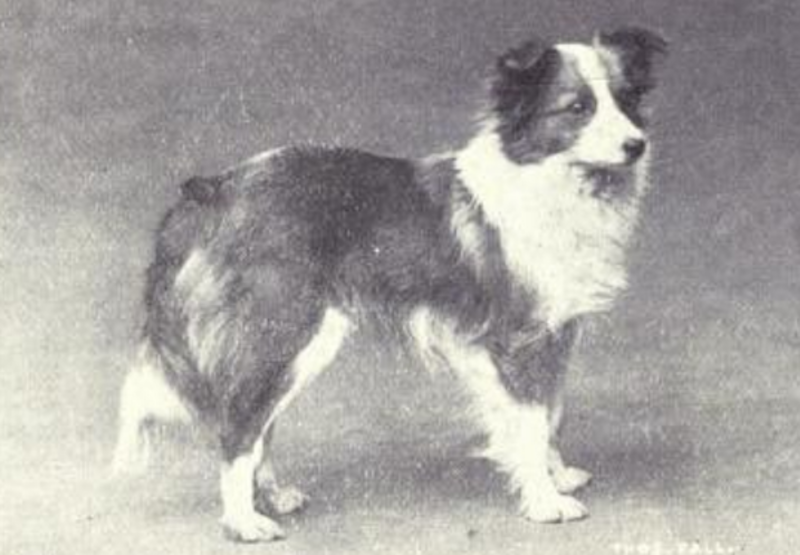
Source: "Dogs of All Nations"
Today, the dogs have been bred to be larger, weighing at least 20 pounds, though still slight. And their fur has become unmistakably longer since 1915. The AKC now describes them as "small, alert, rough-coated, long-haired working" dogs. They are also very intelligent and good at herding.
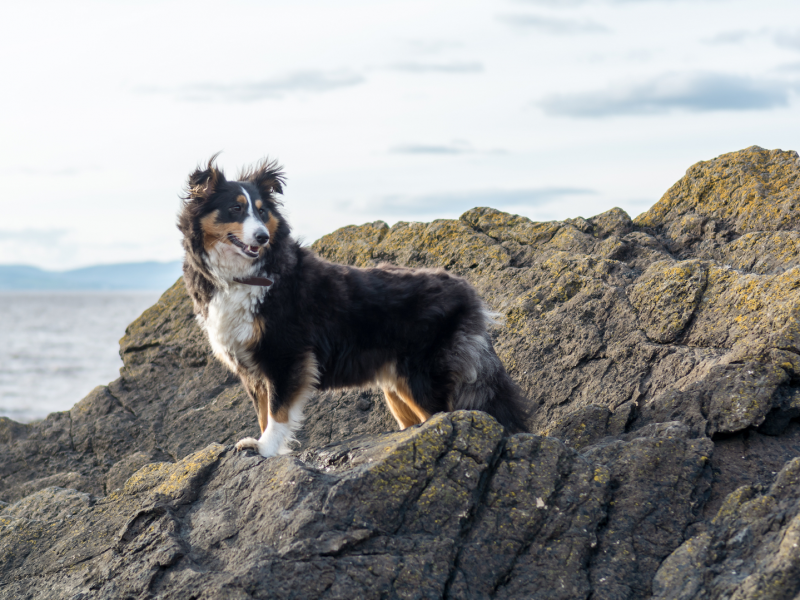
Source: American Kennel Club
Chow Chows, which used to weigh about 50 pounds, now weigh up to 75 pounds.
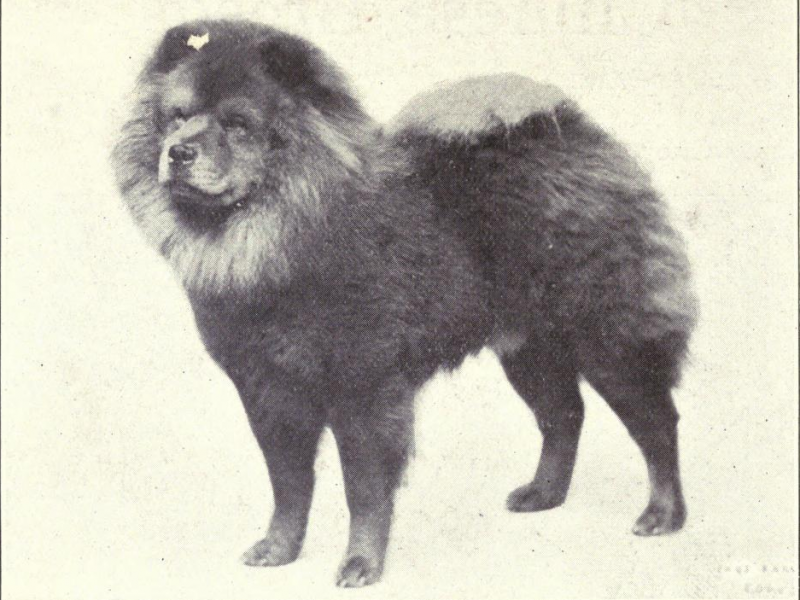
Source: "Dogs of All Nations"
Some of this additional weight comes through in their faces, which are much more wrinkly than they used to be.

Source: "Dogs of All Nations"
Leaner than the modern version, Great Danes used to weigh around 120 pounds, according to "Dogs of All Nations." Today, the large breed weighs more, with males reaching up to 175 pounds.
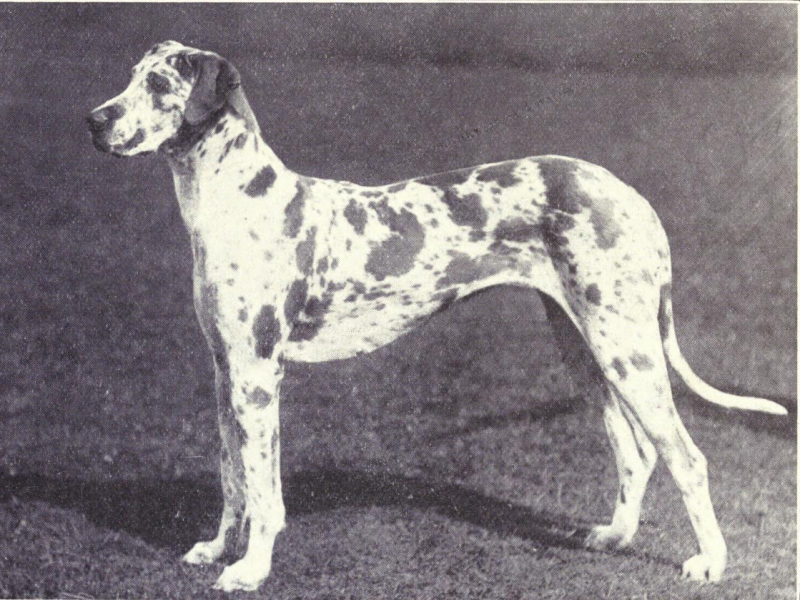
Source: "Dogs of All Nations"
According to the AKC, Great Danes used to be used for hunting wild boars, but now they typically reside as the protectors of their homes.

Source: American Kennel Club
Huskies have historically been sled dogs, but according to the AKC, sledding for function turned to sport as the breed gained popularity in the early 20th century.

Source: "Dogs of All Nations"
Today, huskies have pointier ears than they used to, but they have always been known for their varying size and color.
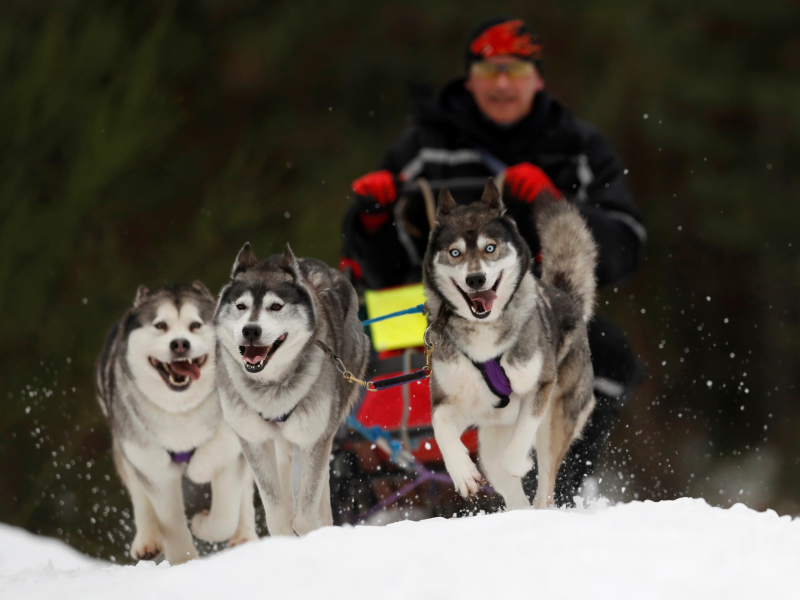
Source: "Dogs of All Nations"
Every pack of sled dogs has a leader, according to "Dogs of All Nations," and this husky was a record-setting sled dog that was labeled "one of the greatest leaders Alaska has ever known."
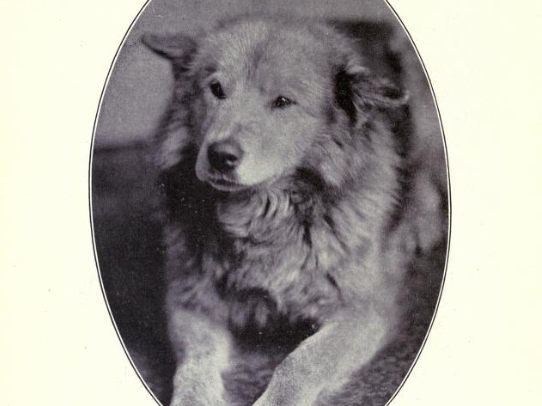
Source: "Dogs of All Nations"
Newfoundlands are another breed of northern workers. Pictured here hauling a tree, the breed is historically full of lifeguards. Newfoundlands boarded ships with Canadian fisherman and rescued people from icy waters.

Source: "Dogs of All Nations"
Although Newfoundlands from the 20th century appear to be relatively similar to today's Newfoundlands, they were likely considerably smaller. While "Dogs of all Nations" suggests that the breed weighed around 100 pounds in 1915, the AKC states that Newfoundland males can weigh up to 150 pounds today.

Source: "Dogs of All Nations"
West Highland white terriers used to work as rat exterminators, according to the AKC.
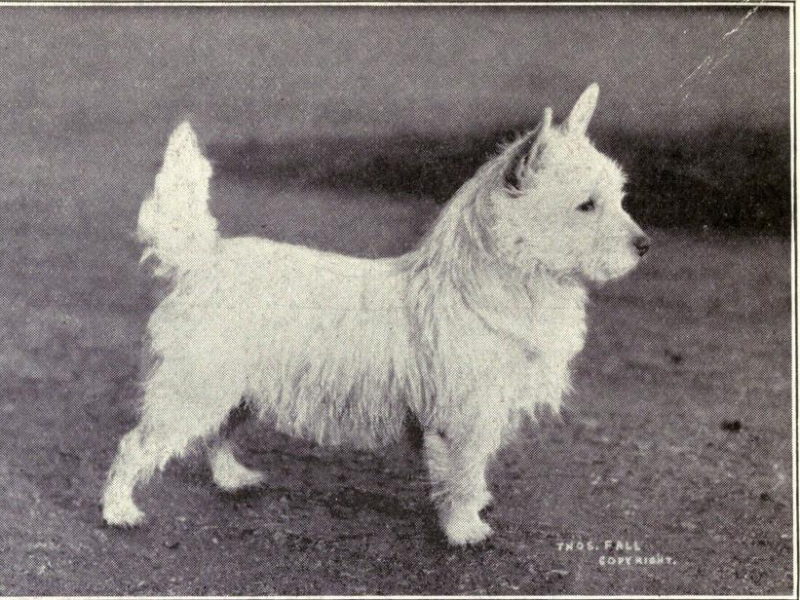
Source: American Kennel Club
But today's working white terrier, typically an inch or two shorter, lives a different kind of life — the breed has become known more recently for modeling for brands including Juicy Couture and Black & White Scotch.

Source: American Kennel Club
The Old English sheepdog is also known for its looks. These actor dogs have been casted in movies including Disney's "The Shaggy Dog" and "The Shaggy D.A.," according to the AKC.
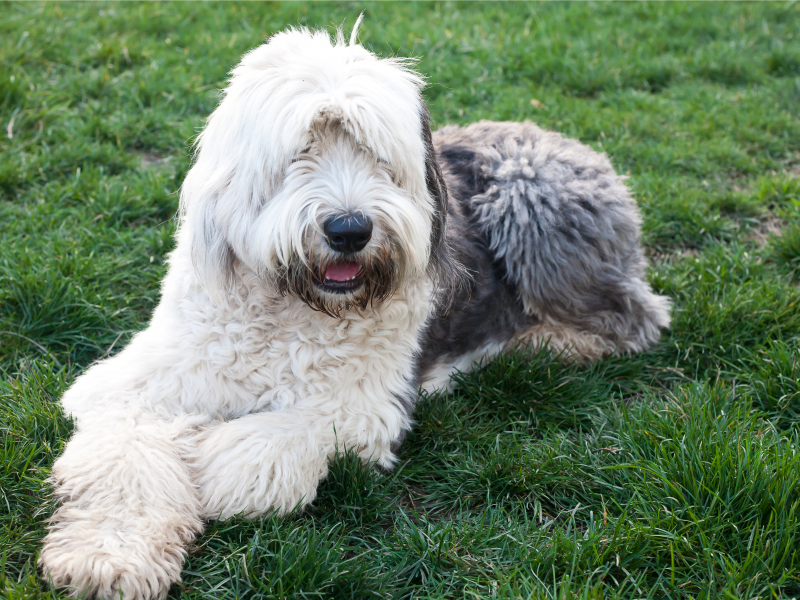
Source: American Kennel Club
But this hasn't always been the case. Despite its name, the shaggier 20th century Old English sheepdogs were historically used to herd cattle, according to the AKC.
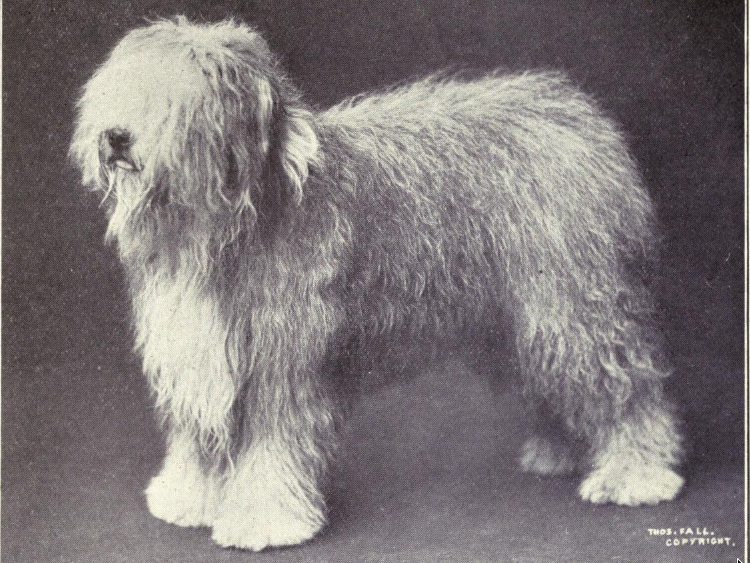
Source: American Kennel Club
Poodles started out as duck hunters and shifted the work to water retrieving about 400 years ago, according to the AKC. While they are known for their poofy, flamboyant hairstyle, this wasn't always the only popular poodle 'do.
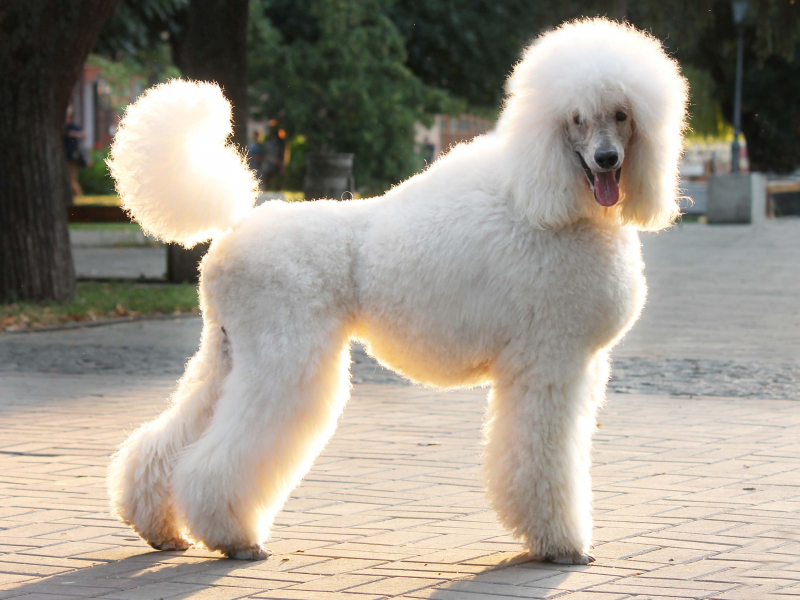
Source: American Kennel Club
A century ago, corded poodles were among the most popular of the breed. The flamboyant poof cut started out of function rather than form.

Source: "Dogs of All Nations"
According to the AKC, owners began shaving poodles to make it easier for them to move around water, and they left hair on the areas that need protection from the cold.

Source: American Kennel Club
Another breed known for its haircut, the Scottish terrier's coat is much longer than it used to be, and the difference results in a different shape and texture.
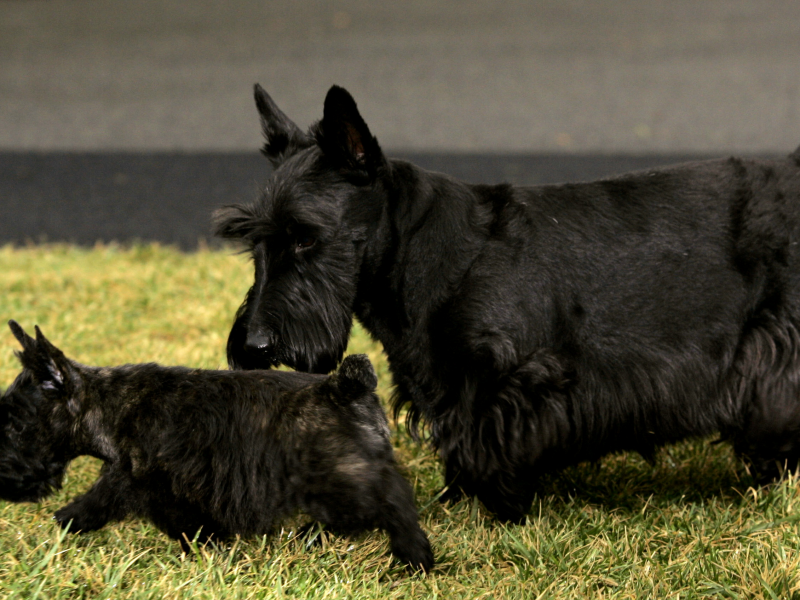
Source: American Kennel Club
Scottish terriers had two-inch coats 100 years ago. According to the AKC, longer coats are softer than shorter ones. Scottish terriers used to have wiry coats, according to "Dogs of All Nations."

Sources:"Dogs of All Nations", American Kennel Club
The basset hound has essentially become a caricature of itself. Its somewhat-extreme characteristics have been exaggerated further over time.

Source:"Dogs of All Nations"
Their long ears have gotten longer, their short legs have gotten shorter, and their elastic skin has gotten looser, according to the AKC.
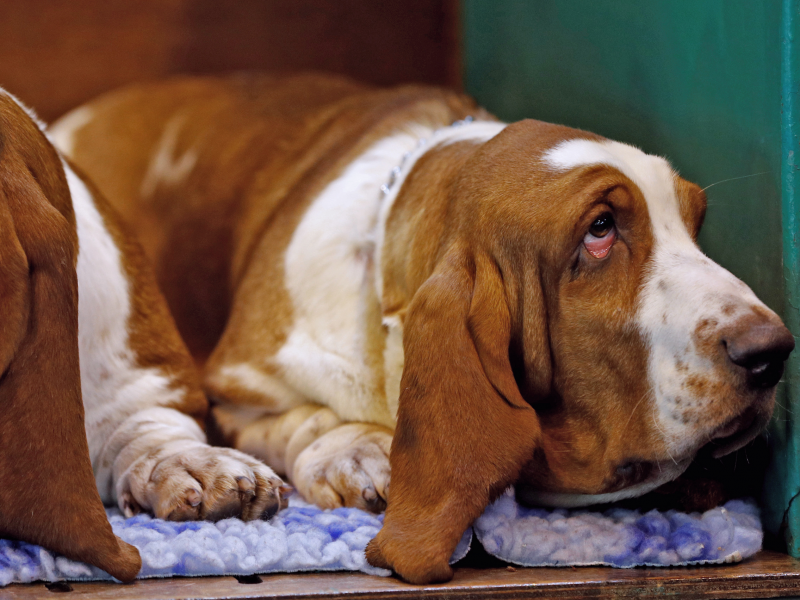
Source: American Kennel Club
Not all breeds have so drastically, however — for the Great Pyrenees, the differences are in the details.
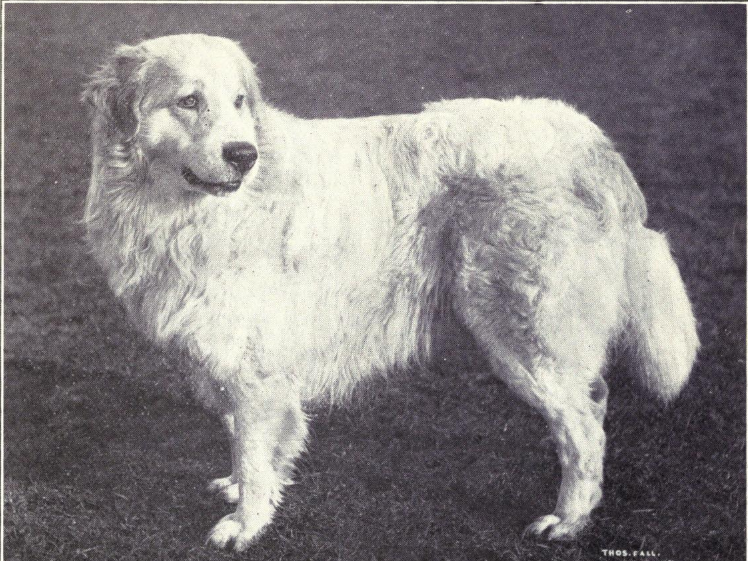
Source: "Dogs of All Nations"
While the breed now has slightly larger eyes and slightly smaller ears, the line from outer eye to ear is a remaining characteristic, according to the AKC.
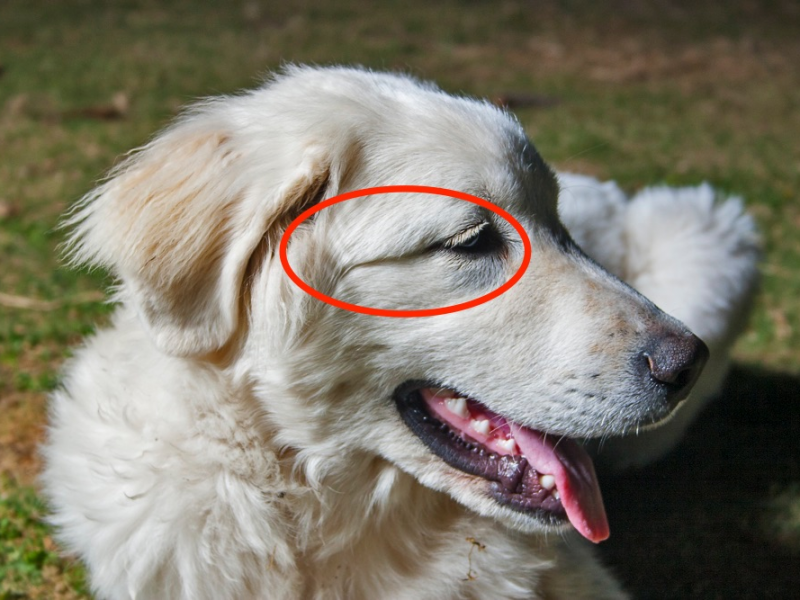
Source: American Kennel Club
